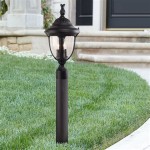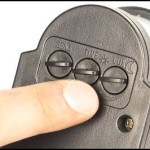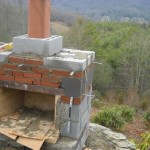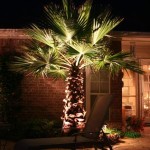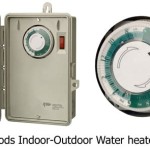Outdoor Lighting Wiring: A Comprehensive Guide to Safe and Effective Installation
When it comes to enhancing the beauty and security of your outdoor space, installing outdoor lighting is a must. By casting a warm glow over pathways, patios, and gardens, outdoor lighting not only illuminates your surroundings but also creates an inviting atmosphere for you and your guests to enjoy. However, achieving a successful outdoor lighting setup requires careful planning and meticulous attention to detail, particularly in regards to wiring. Whether you're a seasoned DIY enthusiast or hiring a professional electrician, understanding the essential aspects of outdoor lighting wiring is crucial for ensuring a safe and effective installation.
1. Choose the Right Lighting Fixtures:
The foundation of any outdoor lighting system lies in selecting the appropriate lighting fixtures. From traditional chandeliers to modern wall sconces, the options are vast. Consider the style and aesthetic you wish to achieve, as well as the specific purpose of each fixture. Pathway lighting, for instance, requires durable fixtures that can withstand the elements, while accent lighting may call for fixtures that accentuate architectural features or landscaping elements.
2. Plan the Layout:
Before delving into the wiring process, it's imperative to create a detailed layout of your desired lighting scheme. Determine the location of each fixture, taking into account the boundaries of your outdoor space, the distance between fixtures, and the direction of the light beam. This will not only enhance the effectiveness of the lighting but also simplify the wiring process.
3. Consider Safety Measures:
Electrical work, particularly outdoors, demands the utmost attention to safety. Always adhere to local electrical codes and regulations to ensure a safe and compliant installation. Employ weatherproof wiring and fixtures to withstand harsh weather conditions, and install outdoor outlets equipped with ground fault circuit interrupters (GFCIs) to prevent electrical shock hazards.
4. Underground Wiring: A Reliable Option:
For a long-lasting and aesthetically pleasing installation, consider running the wiring underground. This method involves burying electrical conduits beneath the soil, protecting the wires from external damage and creating a clean, uncluttered appearance. While underground wiring requires more effort upfront, it offers superior durability and peace of mind in the long run.
5. Connect Fixtures and Power Up:
Once the wiring infrastructure is in place, it's time to connect the lighting fixtures. Carefully follow the manufacturer's instructions for each fixture to ensure proper installation. Once all the connections are made, connect the system to the electrical panel or outdoor outlet. Verify that all the fixtures are functioning correctly, adjusting the direction and intensity of the light as desired.
By employing these essential steps, you can create a stunning and functional outdoor lighting setup that enhances the beauty and security of your outdoor space. If you lack the necessary expertise or feel overwhelmed by the process, don't hesitate to seek the assistance of a qualified electrician. Their knowledge and experience will ensure a safe and efficient installation, allowing you to enjoy the benefits of outdoor lighting without any worries.

Wiring Installation Coastal Source

How To Install Low Voltage Outdoor Landscape Lighting The Garden Glove

Outdoor Low Voltage Lighting Diy Family Handyman

How To Install Low Voltage Outdoor Landscape Lighting The Garden Glove

How To Wire Outdoor Low Voltage Lighting Part 2

Installing A Landscape Lighting System

How To Install A Yard Light Post Electrical Projects Outdoor Lamp Posts Home Wiring

How To Install Outdoor Lighting And Home Electrical Wiring Diy

How To Install Low Voltage Outdoor Deck Lighting

How To Wire Outdoor Low Voltage Lighting Part 3



